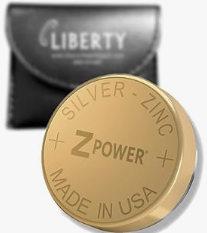As a hearing aid wearer myself, specifically a Phonak Cros B model user, I know firsthand how essential reliable batteries are for maintaining clear and consistent sound quality throughout the day. My device takes Rayovac size 312 batteries, and over the years, I’ve found certain pros and cons in both disposable and rechargeable options.
If you’re considering the best battery for your hearing aid, this guide will walk you through everything you need to know.
Types of Hearing Aid Batteries
- Disposable Zinc-Air Batteries: The most common type for hearing aids, available in sizes 10, 13, 312, and 675, color-coded for convenience. These batteries activate upon exposure to air and usually last a few days to a week, depending on usage.
- Rechargeable Lithium-Ion Batteries: Becoming more popular due to ease of use and lower waste. These batteries are built-in, usually rechargeable overnight, and last an average of one to two years before needing replacement.
Disposable vs. Rechargeable Hearing Aids: Which is Better?
- Convenience: Disposable batteries are easy to swap out, but if you’re on the go and forget extras, it can be frustrating. Rechargeable batteries, on the other hand, require only a charging station and offer a full day of power once charged.
- Cost: Over time, rechargeable batteries may be more cost-effective, especially if you go through disposables quickly. However, the upfront investment is higher with rechargeable hearing aids.
- Environmental Impact: Rechargeable batteries generate less waste, making them a more eco-friendly choice.
- Power Stability: Rechargeable batteries offer consistent output throughout the day, while disposable batteries may weaken as they near the end of their life cycle.
My Recommendation: Rechargeables are a good choice for anyone who values convenience and eco-friendliness. However, zinc-air batteries are also a solid option for those who may forget to charge overnight or prefer the flexibility of disposables.
Recommended Reading: 312 Rechargeable Hearing Aid Batteries. Are They Worth It?
What Are Some Popular Hearing Aid Battery Brands and Sizes?
- Rayovac: Known for dependable performance, Rayovac batteries (like the size 312 I use) are designed to maintain a strong output for longer. They’re a great option if you’re sticking with disposables.
- Duracell: Known for their PowerOne batteries, Duracell is another top brand in hearing aid batteries, often praised for long-lasting power.
- Energizer: A household name, Energizer offers various hearing aid battery sizes and is a trusted brand for battery longevity.
- PowerOne: Especially popular in Europe, PowerOne provides zinc-air batteries with reliable consistency
How To Go About Choosing the Right Hearing Aid Battery Size
- Size 10 (Yellow): Small and typically used for mini or completely-in-canal (CIC) hearing aids, with a lifespan of 3-5 days.
- Size 13 (Orange): Slightly larger and common in behind-the-ear (BTE) models, lasting about a week.
- Size 312 (Brown): This is the size I use in my Phonak Cros B model, known for about a 3-5 day lifespan and is ideal for BTE aids.
- Size 675 (Blue): Largest and primarily used in high-power hearing aids, with a lifespan of up to two weeks.
Essential Tips for Maximizing Hearing Aid Battery Life
- Store Batteries Properly: Keep them at room temperature in a dry place; avoid storing them in the fridge, which can cause condensation.
- Allow Zinc-Air Batteries to Breathe: After removing the sticker, let the battery sit for about five minutes to fully activate.
- Turn Off Hearing Aids When Not in Use: Even brief periods of power-off time, such as during breaks or sleep, can save battery life.
- Clean Hearing Aids Regularly: Moisture or earwax buildup can impact battery performance, so regular cleaning can help extend the battery’s life.
Recommended Reading: What is The Price Of Hearing Aids These Days?
FAQs About Hearing Aid Batteries
- Can I Use Rechargeable Batteries in My Hearing Aid?
Not all hearing aids are compatible with rechargeable batteries. If your model was designed for disposable batteries, rechargeable options may not fit or work properly. Always consult your audiologist or check with your hearing aid’s manufacturer. - How Do I Dispose of Hearing Aid Batteries?
Since zinc-air batteries contain trace amounts of mercury, they should be disposed of at designated battery recycling locations. Rechargeable batteries also require specific disposal to avoid environmental harm. - What Battery Size Is Most Common?
Size 312 is among the most popular sizes for modern hearing aids due to its compact design and decent power life, making it suitable for everyday use without frequent replacements.
Conclusion
Finding the best hearing aid batteries depends on your lifestyle, device, and personal preference. I’ve personally enjoyed the reliable power of Rayovac 312s, but I can see the growing appeal of rechargeables for their convenience and environmental benefits.
Whatever your choice, understanding the features and differences can help you enjoy uninterrupted hearing with less hassle.
If you have any questions or would like recommendations based on your specific hearing aid model, feel free to ask!
Looking forward to hearing from you.
Regards and Take Care
Roopesh


